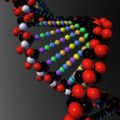
Australian and Israeli researchers from the ARC Centre of Excellence for Coral Reef Studies (CoECRS) have discovered what makes moonlight a catalyst for romance. They have identified ancient light-sensitive genes, known as a cryptochromes, that occur in corals, fish and humans which are responsible for triggering the annual mass spawning of Great Barrier Reef corals that follows a full moon.
Reporting in the journal Science, team leader Oren Levy said that the Cry2 gene, stimulated by the faint blue light of the full moon, appears to play a central role in triggering the mass coral spawning event, one of nature’s wonders. “This is the key to one of the central mysteries of coral reefs. We have always wondered how corals without eyes can detect moonlight and get the precise hour of the right couple of days each year to spawn,” added co-researcher Ove Hoegh-Guldberg.
The researchers believe that the genes are, in a sense, the functional forerunners of eyes. In humans, cryptochromes still operate as part of the circadian system that tunes us to the rhythms of our planet, though their light-sensing function appears lost to us.
“Many of these genes developed in deep time, in the earliest phases of organized life on the planet,” team member Bill Leggat said. “They were preserved for hundreds of millions of years before being inherited by corals when they developed about 240 million years ago, and are still found today in modern animals and humans. They are an indicator that corals and humans are in fact distant relatives, sharing a common ancestor way back.”
The researchers were shy about speculating whether humans are in some way affected by the full moon, but they did acknowledge that cryptochromes probably still play a part in our body clock.
Related articles:
Carbon Dioxide 1, Coral Reefs 0
Aquatic Group Sex May Provide Clues On Evolution Of Human Genes
Alarm Over Rising Acidity Of Oceans
New Climate Studies Predict Dire Future


















Comments are closed.